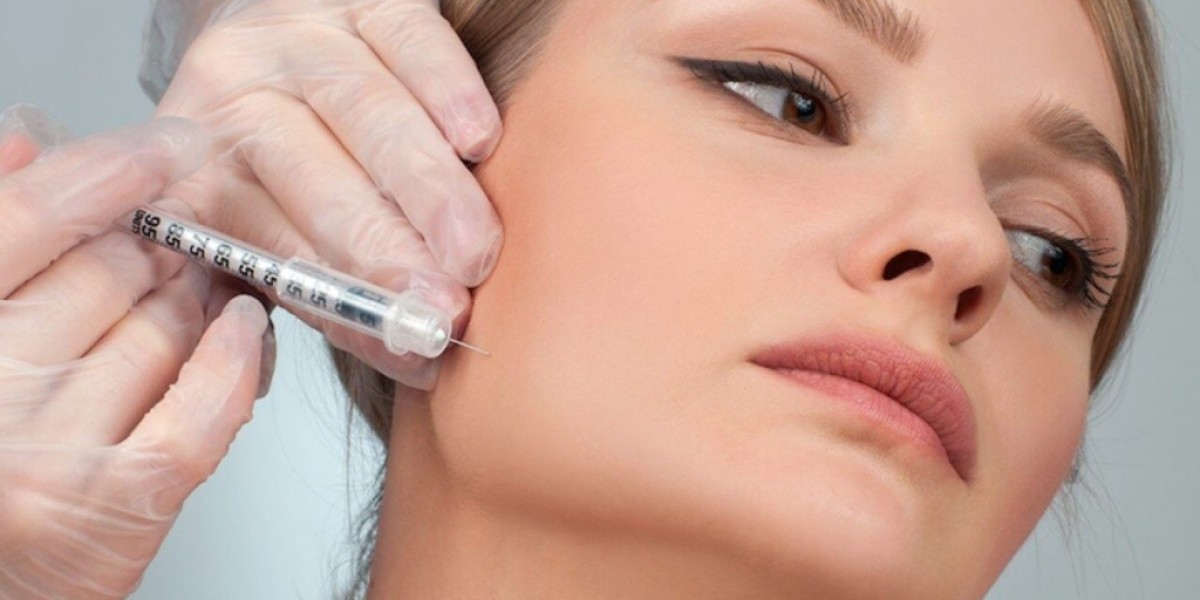Chin filler injections have become a popular non-surgical aesthetic procedure aimed at enhancing facial harmony, correcting asymmetries, and improving the overall balance of facial features.
As with any injectable procedure, a thorough understanding of facial anatomy, meticulous technique, and strict adherence to safety protocols are essential for achieving optimal results and minimizing risks. This article explores the anatomy relevant to chin fillers, common injection techniques, safety considerations, and best practices in clinical application.
Understanding the Chin Anatomy
Before performing chin filler injections, practitioners must have a comprehensive understanding of the underlying anatomy of the chin. The key anatomical structures include:
1. Bony Structures
The mandible, particularly the menton (the central point of the chin), forms the bony foundation of the chin. A well-defined mandibular symphysis gives the chin its prominence. Bone resorption can occur with aging, affecting chin projection and support.
2. Musculature
Mentalis Muscle: A paired muscle that covers the tip of the chin and is responsible for chin movement. Overactivity can lead to a pebbly or dimpled appearance.
Depressor labii inferioris and depressor anguli oris: These muscles pull the lower lip and corners of the mouth downward and are located near the chin region, making them relevant during lower-face injections.
3. Vascular Structures
Mental Artery and Vein: The mental artery is a terminal branch of the inferior alveolar artery, exiting through the mental foramen, usually located between the first and second premolars. It supplies blood to the chin and lower lip.
Mental Foramen: This is a key landmark to avoid during injections. The foramen typically lies 1.5 to 2.0 cm above the inferior border of the mandible.
4. Soft Tissue
The chin contains layers of fat, skin, and fascia overlying the bone and muscles. These tissues vary in thickness with age, gender, and individual anatomy, affecting filler placement and depth.
Indications for Chin Filler Injections
Chin augmentation with fillers is indicated for several aesthetic purposes:
Enhancing chin projection and definition.
Correcting asymmetries or congenital deformities.
Balancing facial proportions (e.g., improving the profile about the nose and lips).
Smoothing dimpling caused by the hyperactive mentalis muscle.
Counteracting age-related volume loss and bone resorption.
Types of Fillers Used
Hyaluronic acid (HA) fillers are the most commonly used for chin augmentation due to their reversibility, safety, and predictable results. Other options include calcium hydroxylapatite and poly-L-lactic acid, though these are less common for initial treatment due to their longevity and less reversibility.
Key properties of an ideal filler:
High G’ (elasticity) to provide structural support.
Cohesive gel structure to maintain shape.
Longevity appropriate for the treatment area (typically 12–18 months for HA).
Injection Techniques and Depths
Chin filler injections can be performed using either a needle or a blunt-tip cannula. The choice depends on the injector’s preference, anatomical considerations, and patient-specific factors.
1. Injection Planes
Supraperiosteal: Just above the bone, ideal for deep projection and structural augmentation.
Subcutaneous: For more superficial contouring and smoothing transitions.
Intramuscular (mental is): Used cautiously to improve soft tissue irregularities.
2. Techniques
Bolus Injections: Depositing a small amount of filler in one spot for projection (usually on or near the menton).
Linear Threading: Ideal for sculpting the chin contours and blending with adjacent areas.
Fanning or Cross-hatching: Helps distribute filler evenly and avoid lumps.
3. Landmarks to Avoid
Mental Foramen: Avoid injecting directly over or near this foramen to prevent vascular or nerve injury.
Midline Blood Supply: Avoid deep injections into the midline groove where vascular anastomoses are present.
Safety Considerations
Chin filler injections, while generally safe, do carry risks if not executed properly. Here are key safety strategies:
1. Aspiration
Although not always reliable, aspiration before injection may help avoid intravascular placement. It should be combined with slow, low-pressure injections.
2. Depth Control
Injecting in the correct plane is essential. Too deep may risk vascular complications or nerve impingement; too superficial may lead to visibility or palpability of the filler.
3. Anatomic Awareness
Knowledge of vascular “danger zones” helps prevent complications like vascular occlusion, necrosis, or embolism.
4. Volume Caution
The chin is a small area with limited soft tissue capacity. Overfilling can result in unnatural appearance or tissue stress. It’s advisable to build volume incrementally over multiple sessions if needed.
5. Use of Cannula
Blunt-tip cannulas reduce the risk of vessel penetration, bruising, and pain. Cannulas are often preferred for contouring and safer filler distribution in the chin and jawline.
Managing Complications
Though rare, complications must be promptly identified and managed:
1. Bruising and Swelling
Common and self-limiting. Cold compresses and NSAIDs (if not contraindicated) can help.
2. Lumps or Asymmetry
Usually due to uneven filler placement or superficial injections. Gentle massage or, if needed, hyaluronidase for HA fillers can resolve these issues.
3. Intravascular Injection
Can lead to tissue necrosis or, in extreme cases, embolism. Early signs include blanching, pain, or discoloration. Immediate action includes stopping injection, massaging the area, applying heat, administering hyaluronidase, and seeking emergency support.
Best Practices for Chin Filler Injections
To maximize both aesthetic outcomes and patient safety, practitioners should adopt the following best practices:
1. Thorough Consultation
Evaluate the patient’s facial proportions, expectations, and medical history. Use facial analysis tools or profile imaging to plan treatment.
2. Informed Consent
Clearly explain the benefits, limitations, potential risks, and aftercare requirements.
3. Sterile Technique
Maintain aseptic conditions to prevent infection. Cleanse the skin thoroughly and use sterile equipment.
4. Start Conservatively
Begin with small amounts of filler and reassess. Overcorrection is difficult to reverse, especially with long-lasting products.
5. Post-Treatment Care
Provide patients with instructions including avoiding pressure on the area, minimizing physical activity, and monitoring for any unusual symptoms.
6. Ongoing Education
Chin anatomy and filler products evolve. Continuous education and hands-on training ensure practitioners stay updated with best practices and emerging techniques.
Conclusion
Chin filler injections offer a powerful, minimally invasive option to enhance facial harmony and rejuvenate the lower face. Mastery of anatomical knowledge, attention to injection technique, and adherence to safety protocols are vital for successful outcomes. As demand continues to grow, so does the importance of maintaining the highest standards of aesthetic medicine—ensuring patient satisfaction and minimizing complications through evidence-based, anatomically guided care.







